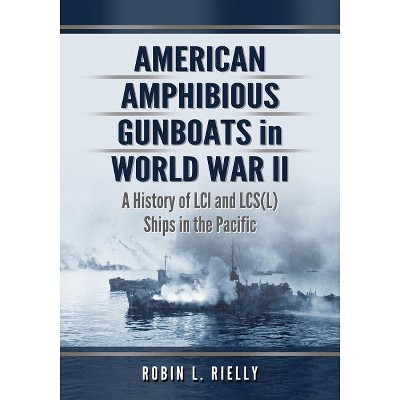Sponsored

Kamikaze Attacks of World War II - by Robin L Rielly (Paperback)
In Stock
Sponsored
About this item
Highlights
- Drawing on U.S. government reports, interrogation reports of Japanese officers, ship action reports and secondary sources, this book details more than 400 kamikaze attacks by Japanese aircraft, manned torpedoes, suicide boats and suicide swimmers against U.S. ships during World War II.
- About the Author: Robin L. Rielly spent many years as an educator, specializing in international relations, Asian studies and American history.
- 384 Pages
- History, Military
Description
About the Book
Drawing on U.S. government reports, interrogation reports of Japanese officers, ship action reports and secondary sources, this book details more than 400 kamikaze attacks by Japanese aircraft, manned torpedoes, suicide boats and suicide swimmers against U.S. ships during World War II. Part One focuses on the traditions, development and history of the kamikazes, including the origins of the samurai class and its ethos, the development of kamikaze aircraft and watercraft, and the indoctrination of children in the Japanese school system. Part Two details the kamikaze attacks on ships in the waters around the Philippines, Iwo Jima, Taiwan, Okinawa and Japan. Appendices list all of the U.S. ships suffering kamikaze attacks along with casualty figures, outlines and silhouettes of various U.S. ships involved in kamikaze attacks, and silhouettes of Japanese kamikaze aircraft.Book Synopsis
Drawing on U.S. government reports, interrogation reports of Japanese officers, ship action reports and secondary sources, this book details more than 400 kamikaze attacks by Japanese aircraft, manned torpedoes, suicide boats and suicide swimmers against U.S. ships during World War II. Part One focuses on the traditions, development and history of the kamikazes, including the origins of the samurai class and its ethos, the development of kamikaze aircraft and watercraft, and the indoctrination of children in the Japanese school system. Part Two details the kamikaze attacks on ships in the waters around the Philippines, Iwo Jima, Taiwan, Okinawa and Japan. Appendices list all of the U.S. ships suffering kamikaze attacks along with casualty figures, outlines and silhouettes of various U.S. ships involved in kamikaze attacks, and silhouettes of Japanese kamikaze aircraft.
Review Quotes
"the author has brought together every suicide attack he could positively identify...this compendium will undoubtedly be useful to future writers, and is a record one cannot resist reading with horror and regret for the lives wasted in what seem to us now a futile gesture"-Library Journal; "a thorough account...a very solid, fact-based synopsis of the Japanese suicide forces...the perfect book for someone who wants an understanding of the development and employment of special attack forces...nicely illustrated...almost certainly the best book on the subject. Highly recommended"-Stone & Stone Second World War Books; "in its extensive research, range, depth and detail, historian Rielly's work is the most important book to appear on the suicide attacks of World War II, and deserves to stand at the head of kamikaze literature"-National Association of USS LCS Newsletter; "an exhaustive study"-The National Association of Destroyer Veterans; "valuable"-The NYMAS Review.
About the Author
Robin L. Rielly spent many years as an educator, specializing in international relations, Asian studies and American history. He also served as the Historian/Archivist for the USS LCS(L) 1-130 Association, a World War II veteran's group. This is his sixth book dealing with American Naval history.Shipping details
Return details
Frequently bought together

Trending Non-Fiction
















